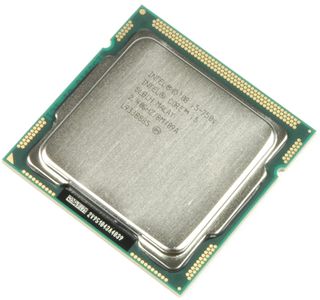Intel Core i5-750S: Since When Does The S Mean Slow?
Core i5-750S: 82W TDP
Based on exactly the same silicon, the S-model looks and feels like the regular Core i5-750. The main difference in everyday operation is its maximum power, which is limited to 82W instead of the regular 95W. This 13W reduction isn't nearly as impressive as the 30W drop it ensured with the Core 2-class equivalents.

Most likely, the new specifications will limit power consumption and thermal dissipation to levels suited to components created for a 65W power envelope. Idle power isn’t an issue, and system peak power consumption is clearly lower on the Core i5-750S than on the regular model. From this perspective, Intel’s S-model lives up to expectations.
However, Intel doesn't seem to have introduced any special options that would allow these processors to run at decreased voltage levels. Ultimately, such options are what made all of the existing Core 2 S-class CPUs more efficient.
Intel instead applies a much simpler tweak to bring power down. It reduces the nominal clock speed by 266 MHz and disables the Turbo Boost feature when three or four processing cores are under load. Fortunately, the acceleration feature remains active when only one or two cores are taxed. All voltage levels seem to remain identical, at least on our test system.
We found that the performance impact from reduced clock speeds is pretty noticeable. On one hand, quad-core performance is impacted a bit, which alone isn’t much of an issue. The trouble with Turbo Boost only working with one or two cores, though, is that modern operating systems will aggressively distribute threads across all available cores, meaning that in many workloads you will get average workloads on multiple cores. The end result is Turbo Boost staying inactive. Only manual adjustment of thread affinity or true single-threaded applications will yield the Core i5-750S running on par with the regular i5-750. This isn't a caveat we were forced to make previously in analyzing the Core 2s.


Stay on the Cutting Edge
Join the experts who read Tom's Hardware for the inside track on enthusiast PC tech news — and have for over 25 years. We'll send breaking news and in-depth reviews of CPUs, GPUs, AI, maker hardware and more straight to your inbox.
Current page: Core i5-750S: 82W TDP
Prev Page Core i5-750S: What Does The S Stand For? Next Page CPU-Z ScreenshotsMost Popular

